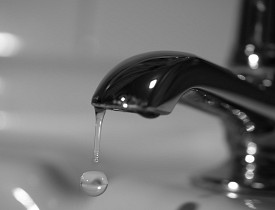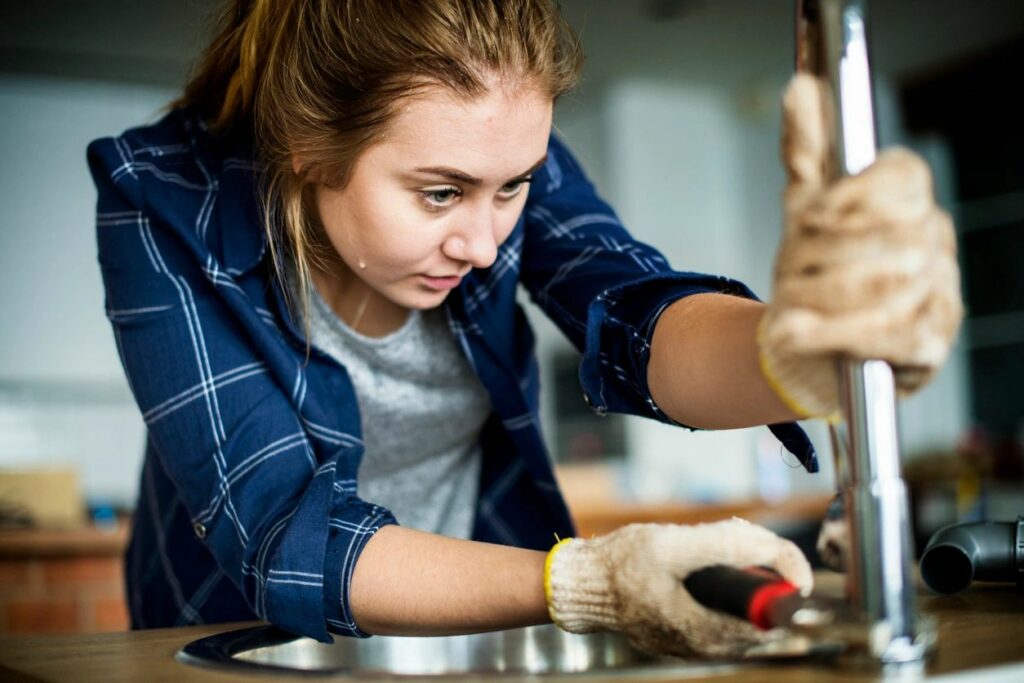Which It's Crucial to Fix a Faulty Faucet
Which It's Crucial to Fix a Faulty Faucet
Blog Article
Do you find yourself interested in guidance on Leaky Faucets: Why They Happen & What to Do About Them?

Trickling taps could appear like a small hassle, however their impact goes beyond simply the aggravation of the audio. From drainage to incurring unneeded economic expenses and health and wellness dangers, disregarding a dripping tap can cause different consequences. In this article, we'll look into why it's critical to address this common house problem quickly and efficiently.
Wastage of Water
Ecological Effect
Dripping taps contribute significantly to water waste. According to the Epa (EPA), a solitary faucet dripping at one drip per secondly can lose greater than 3,000 gallons of water per year. This not only stress water resources but additionally affects communities and wildlife depending on them.
Step-by-Step Overview to Repairing a Dripping Tap
Devices Called for
Prior to attempting to repair a trickling faucet, gather the essential devices, including an adjustable wrench, screwdrivers, substitute parts (such as washing machines or cartridges), and plumber's tape.
Typical Tap Issues and Their Solutions
Recognize the kind of tap and the details problem creating the drip. Typical troubles include damaged washers, corroded shutoff seats, or defective O-rings. Describe maker instructions or on-line tutorials for step-by-step assistance on fixings.
Financial Costs
Raised Water Bills
Beyond the ecological impact, leaking taps can pump up water expenses substantially. The collected wastage gradually converts into higher energy expenditures, which could have been prevented with prompt repair services.
Potential Building Damage
Additionally, long term dripping can result in damage to components and surface areas bordering the tap. Water accumulation can create staining, rust, and also architectural concerns if left neglected, resulting in extra repair service prices.
Wellness Problems
Mold and Mildew Growth
The continuous existence of wetness from a trickling tap develops an ideal environment for mold and mildew growth. These fungi not only jeopardize indoor air quality yet likewise present wellness threats, particularly for people with respiratory system conditions or allergic reactions.
Waterborne Conditions
Stationary water in trickling taps can become a breeding place for bacteria and other pathogens, raising the danger of waterborne diseases. Contaminants such as Legionella microorganisms thrive in stagnant water, possibly causing significant ailments when consumed or breathed in.
DIY vs. Expert Repair service
Benefits and drawbacks of Do It Yourself Repair Service
While some might try to repair a trickling tap themselves, do it yourself repair work include their very own collection of challenges. Without appropriate understanding and tools, DIY efforts can worsen the problem or result in incomplete repairs, lengthening the issue.
Benefits of Working With an Expert Plumber
Working with an expert plumber ensures that the underlying source of the trickling faucet is resolved successfully. Plumbing technicians possess the proficiency and tools to identify and repair tap problems successfully, saving time and minimizing the risk of more damages.
Environmental Duty
Private Payment to Conservation
Taking duty for repairing dripping faucets aligns with more comprehensive initiatives toward water conservation and ecological sustainability. Every person's actions jointly make a considerable impact on maintaining valuable sources.
Sustainable Living Practices
By prioritizing punctual repair services and taking on water-saving practices, people contribute to lasting living practices that profit both present and future generations.
Preventive Measures
Regular Upkeep Tips
To stop dripping faucets, carry out regular upkeep such as cleaning aerators, checking for leakages, and changing damaged components promptly. Additionally, think about mounting water-saving devices or upgrading to much more effective components.
Significance of Prompt Repairs
Resolving leaking faucets as quickly as they're discovered protects against more water waste and prospective damages, ultimately saving both water and money over time.
Effect On Home Worth
Understanding of Well-Maintained Residential Property
Preserving a residential property in good condition, consisting of dealing with maintenance concerns like trickling faucets, improves its perceived value and desirability among potential buyers or lessees.
Impact on Resale Worth
Qualities with well-kept plumbing fixtures, including taps, command greater resale worths in the realty market. Attending to leaking faucets can add to a favorable perception during property inspections and arrangements.
Final thought
Addressing a trickling tap goes beyond simple comfort; it's a vital step towards preserving water, minimizing monetary expenses, and safeguarding health and residential property. Whether through do it yourself fixings or specialist aid, taking action to repair trickling taps is a tiny yet impactful way to promote liable stewardship of resources and contribute to a much healthier, a lot more lasting future.
How to Fix a Leaky Faucet: Step-by-Step Repair Guide
A leaky faucet may seem like a simple annoyance, but if it's not fixed promptly, that leak could cost hundreds to potentially thousands. From water damage to mold, mildew, and high water bills, even a tiny leak can be catastrophic if left unattended. Damage like this can even affect the overall value of your home, so it's important to take the right approach for leaky faucet repair. You may need the help of a plumber in some cases, but we've got a few tips you can try on how to fix a leaky faucet before calling the pros.
Four Faucet Types
When you're learning how to fix a leaky faucet, the first step is knowing what kind of faucet you're working with! There are four common types.
Cartridge Faucets
Cartridge faucets come in one- or two-handled varieties. In one-handled cartridge faucets, hot and cold water combines in a single cartridge. In the two-handled versions, hot and cold water are controlled separately and mixed in the faucet.
Ball Faucets
Ball faucets have a single lever you push up and down to adjust the pressure and rotate to change the temperature. A slotted metal ball controls the amount of water allowed into the spout.
Compression Washer Faucets
They're the oldest type of faucet, but they're still used in many homes — especially older ones. Compression faucets have two separate handles that, when turned, raise or lower the washer that seals a water valve. This valve stops water from flowing through the faucet when it is turned off.
Disc Faucets
Disc faucets rarely need to be repaired due to their maintenance-free design. The water flow is controlled by two discs — the upper one raises and lowers against a fixed lower disc, creating a watertight seal. If your disc faucet starts leaking, you may need to replace the seals or clean residue buildup from the inlets.
Fixing a Leaky Faucet
Step 1: Turn Off the Water
Whether you're learning how to fix a leaky bathtub faucet or how to fix a leaky kitchen faucet, always turn off the water supply to your working area when you're fixing a leak. The last thing you want is a flood added to your list of things to fix.
Look for the shutoff valves below your sink or around the tub and turn them clockwise to stop the water flow. If your faucet doesn't have shutoff valves, you may need to turn off the water for the whole house. Check to make sure it's off by turning the faucet on. If nothing comes out, you're ready to start the repair.
Step 2: Take Apart the Faucet
How you disassemble your faucet depends on the type of fixture you have. You can use a flathead screwdriver to remove the caps on top of the handle or handles for cartridge and compression faucets. Inside, you should see handle screws. Unscrew these with a screwdriver to remove the handle.
Disc- and ball-style faucets will typically have an inlet screw near the handle, and removing that will reveal the interior of the faucet.
Detach the Valve Stem
For cartridge- and compression-style faucets, you'll see the inner valve stem or cartridge once you remove the faucet handles. If you have a compression faucet, unscrew the brass valve stem. If you have a cartridge faucet, pull out the cartridge. If your cartridge has been in place for a while, it may require some tools or extra force to remove it due to mineral deposits.
Examine and Replace Parts
Once you've removed the parts, check them out to confirm what needs to be replaced. You may see corroded rubber washers, O-rings, stems, or cartridges. On a ball-style faucet, check the seats and springs for damage.
If you need to repair a leaky disc faucet, check the inlet and seals on the lower disc.
Once you determine what parts must be replaced, visit your local hardware store. Bring the damaged parts with you to ensure you can purchase the correct components to replace them.
Clean Valves and Faucet Cavity
If you've removed a stem or cartridge, you may notice mineral buildup in the faucet's threads. Use white vinegar to clean the valve seat by soaking it for a few minutes, then scrub it away with a soft toothbrush and rinse with warm water. You can also clean the interior of the faucet in the same way.
Reassemble the Faucet
Once your faucet is cleaned and the required parts have been replaced, it's time to reassemble it. Put the pieces back together and slowly turn the water supply back on. Doing this slowly is crucial because too much initial water pressure can damage the new hardware you've just installed.
https://homewarranty.firstam.com/blog/how-to-fix-leaky-faucet

I hope you enjoyed our part about Should I Repair or Replace a Leaky Faucet?. Thank you for spending some time to read through our piece of content. Are you aware of anybody else who is fascinated by the subject? Do not hesitate to share it. Thank you for your time invested reading it.
Report this page